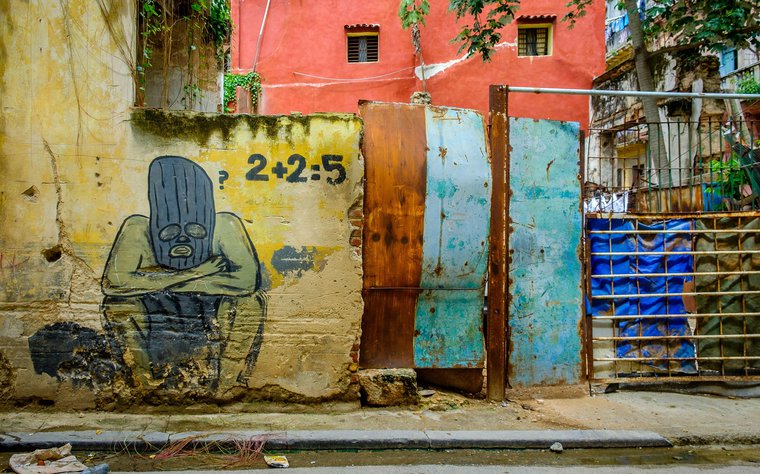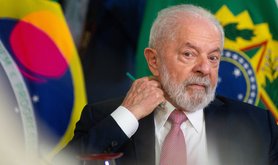
Why Cubans took to the streets
It is no surprise that the young are confronting an old revolution that refuses to accept its failure in bringing development and equality to the Caribbean island

The spontaneous protests by Cubans on 11 July are the culmination of years of frustration, but what really led thousands to take to the streets shouting “libertad”?
Cuba, a country whose revolution was praised by the world’s progressives, has become an autocracy that has failed to bring about economic and social development.
These protests are not organized. There is no leadership mobilizing the people. Rather, they are the desperate expression of people who have been left exhausted by a failed revolution. Factors such as the arrival of the internet on cell phones in 2018, and the desperate economic and health crisis, have played a leading role in uniting protesters.
We’ve got a newsletter for everyone
Whatever you’re interested in, there’s a free openDemocracy newsletter for you.
In early 2021, the Cuban economy was fragile. Food and other basic resources were scarce and the government undertook monetary reform. Until then, the Caribbean island had two currencies – the peso Cubano and the convertible Cuban peso. The new measures cancelled the convertible peso, while the government also opened Free Convertible Currency Shops, or ‘dollar stores’. Cubans can use only convertible currency to buy products from those stores, even though their salaries are paid in peso Cubano. According to the government, these measures were intended to increase the availability of foreign currency and to fight against the scarcity of basic resources, such as food and medicine. However, the devaluation of the peso meant a significant loss of money for ordinary Cubans.
Faced with COVID-19, Cubans were forced to wait in long lines to buy essential items such as food, medicines and personal cleaning products. The government continued to insist that the pandemic was under control and that the Soberana and Abdala vaccines – Cuba’s homegrown jabs – were very effective. While World Health Organization data confirms that COVID-19 infections and deaths in Cuba were stable until March, deaths increased markedly in April and infections soared from May onwards.
Twitter: the freedom to speak up
Cubans have been allowed to use social networks since 2018 to recount, often with humour, the daily hardships of their lives. This development was crucial because it ended the regime´s monopoly on information and communication. Of late, online conversations have been about the endless queues to buy food or the arbitrary detention of ordinary people by security forces without an arrest warrant.
This year, there have been reports of nearly a thousand intimidating and repressive actions by the authorities against members and supporters of the San Isidro and 27N movements, two recently formed artists’ groups demanding freedom of expression for all Cubans.
This year, there have been reports of nearly a thousand intimidating and repressive actions by the Cuban authorities
The security forces routinely position themselves outside locations where critics of the regime plan to meet or even outside their homes, preventing them from leaving. A few weeks before the biggest protests since 1959 erupted, there was an escalation in the number of arrests being made. The Cuban Observatory for Human Rights registered 114 arbitrary detentions in June alone.
International reaction to the repression in Cuba has been rather limited, other than from the Cuban-American community or Cubans living in exile elsewhere. While some academics, journalists and progressive groups have spoken out, it was only after the protests earlier this month that the news began to make international headlines, though accounts of what triggered events on the island are not always entirely accurate.
#SOS Matanzas #SOS Cuba
In the first week of July, the province of Matanzas, roughly 80km east of Havana, became the epicenter of the pandemic. It reported 1,327 new cases on a single day, 7 July, representing nearly half the country’s total infections.
The hashtags #SOSMatanzas and #SOSCuba started to trend on Twitter. Cubans asked for a ‘humanitarian corridor’ to bring international aid into the country. Yet the government continued to claim that all the hardships were due to the decades-old US trade embargo, saying “our doctors grow in adversity”. While it is true that the US trade embargo increased economic strain on Cuba – and that the Trump administration’s tighter sanctions reduced visitors and foreign exchange, worsening the situation – Cuba’s problems stem from the failure of the revolution.
The country has suffered from years of economic stagnation. Unlike other communist countries, most notably China, Cuba has hesitated to adopt market-oriented reforms. The inefficiency of a group of men (there are almost no women in the Cuban government) who lead the country has brought Cuba to the desperate situation it faces today. The government first partnered with the former Soviet Union and then with Venezuelan strongman Hugo Chavez in order to keep alive a failing political and economic model.
The inefficiency of a group of men (there are almost no women in the Cuban government) has brought Cuba to today's desperate situation
For those who follow Cuban contemporary history, it is difficult to argue that the model is economically efficient. Inequality is manifested between the different neighborhoods of Havana, the capital. For instance, in Vedado, Havana’s business district, are beautiful and well-maintained mansions that offer a striking contrast to the dirty, aging buildings in Old Havana, which are on the point of collapse.
Moreover, for decades, Cubans have remained cut off from each other, forced to endure a reality where there is no freedom of opinion and political representatives are imposed upon them. This is because of the inefficiency of an ossified system and government. The US embargo is not responsible for all of the above.
Now, Cuba’s government is faced with a difficult situation. It no longer has a monopoly on communication; Fidel Castro, the leader of the revolution, is long since gone; and the flow of Venezuelan dollars has dried up. President Miguel Diaz-Canel is dealing with the biggest crisis the regime has faced without charisma, legitimacy or dollars.
The young people who spontaneously took to the streets did not live through the revolution. Many were very young five years ago when Castro died. They were never convinced of the sacrifices made for the revolution, which in 62 years has achieved neither equality nor development. The lack of leadership and the clumsy communication skills of Diaz-Canel were the final spark that lit the rebellious fire of 11 July.
Read more
Get our weekly email




Comments
We encourage anyone to comment, please consult the oD commenting guidelines if you have any questions.